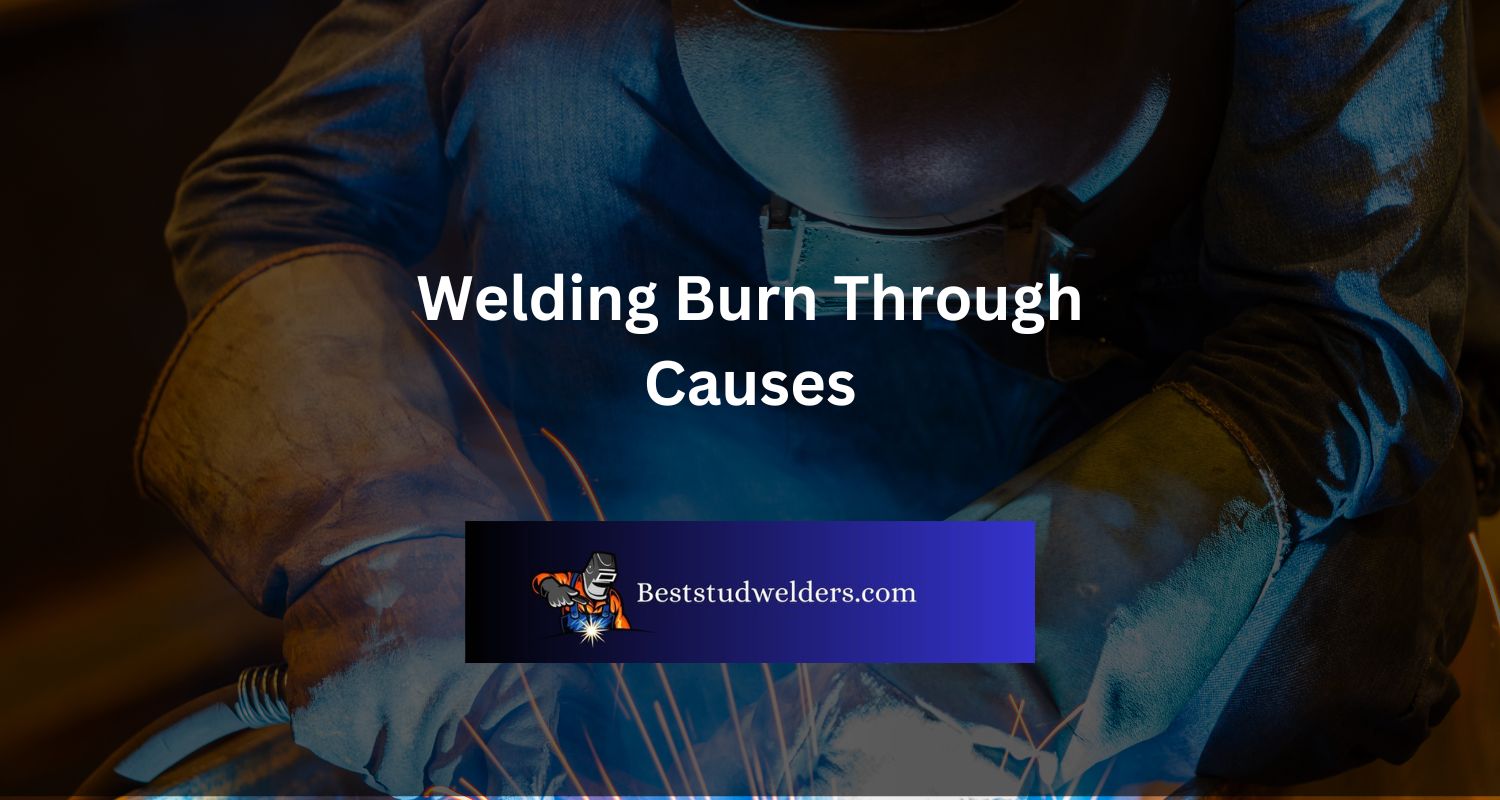The welder’s trying to make a hole-in-one, but unfortunately it’s not a golf course – it’s a welding job. Welding burn-through is an issue when working on thin metals. It happens when the base metal is melted beyond its capacity, causing holes and weakened areas.
The main cause of welding burn-through is excess heat build-up due to high current and long exposure to welding arcs. Other causes are insufficient shielding gas, wrong welding parameters, and unsuitable filler wire sizes.
To avoid burn-through, welders should:
- Select the correct welding parameters such as amperage, voltage, and travel speed.
- Add extra layers and tack welds to increase strength.
- Check the gas flow rate for ideal penetration.
Pro Tip: Instead of relying on weld deposition, riveting or glue can be used to thicken pre-welded materials and minimize burn-through.
Causes of Welding Burn Through
Excessive heat can cause burn-through welding defects, melting or evaporating the base metal and leaving holes in it. Thin walls can make components more susceptible to this issue. Poor welding equipment, wrong parameters and incorrect electrode size can also contribute.
To avoid burn-through, welders should use lower current and pay attention to voltage levels. The correct electrode size should be used for the use case. Safety measures like ventilation and protective clothing should be maintained.
Ignoring burn-through can lead to costly repairs and re-welding. Prevention is better than cure. To ensure successful welds of higher quality, remember fire belongs in the fireplace, not your welds.
.jpg)
Prevention of Welding Burn Through
Welding Burn Through Prevention can be managed properly with the right tactics. To ward off welding burn through, multiple steps need to be taken, and safety guidelines must be followed.
A Step-by-Step Guide for Welding Burn Through Prevention:
- Confirm correct electrode, polarity and current settings
- Utilize an ideal filler material and size to match the joint thickness.
- Decrease amperage or voltage to stop the weld metal from heating up too much
- Chill the weld zone with compressed air or water spray in between runs
- Keep an eye on the location of the heat zone at all times.
Also, opting for an efficient welding technique can minimize the chances of a burn-through. Picking TIG over MIG or stick welding is usually preferred as it offers more control over heat input.
It’s noteworthy that an incorrect calibration of equipment can also cause welding burn through. According to a study by WeldingTopTech, around 34% of welding burn-through incidents are caused by equipment malfunction.
Conclusion
Preventing welding burn through can be hard, especially with thin materials. To prevent it, you need to:
- Pick the right welding technique, metal, and electrode size
- Prepare the base metal and control heat input
- Keep enough space between joints and make sure they fit well
- Reduce the amperage setting to reduce risks
Follow these steps to avoid issues. Seek expert advice if you’re still facing problems.
Ignoring prevention measures can lead to big problems and bad welds. Take precautions before you start to get efficient results and assurance of quality welds.
Frequently Asked Questions
What causes welding burn through?
Welding burn through can be caused by factors such as excessive heat input, improper electrode size, high weld current, poor joint fit-up, and insufficient shielding gas.
How can welding burn through be prevented?
Welding burn through can be prevented by ensuring proper joint fit-up, using the appropriate electrode size and type, maintaining the correct weld current, using the right shielding gas, and controlling heat input.
What are some signs of welding burn through?
Signs of welding burn through include excessive porosity, craters in the weld, a visible hole or gap in the weld, and distortion or warping of the workpiece.
Can welding burn through be repaired?
Welding burn through can often be repaired by filling the hole or gap with additional weld metal and smoothing the surface with a grinder or other tool. However, prevention is always better than repair.
What safety measures should be taken when welding to prevent burn through?
Safety measures to prevent welding burn through include wearing appropriate personal protective equipment, such as a welding helmet and gloves, ensuring adequate ventilation in the workspace, and following proper welding procedures and safety guidelines.
What types of welding processes are most prone to burn through?
Welding processes that involve high heat input, such as gas tungsten arc welding (GTAW) and gas metal arc welding (GMAW), are most prone to burn through. However, burn through can occur with any welding process if proper precautions are not taken.
Paul Dixon is a certified welder with a wealth of experience in welding and related technologies. He started his career as an apprenticeship in welding, where he learned the ropes and acquired extensive skills in the craft.
Over the years, Paul has continued to sharpen his expertise, earning him top-rated welding certification. He remains one of the most outstanding welders in the industry.







